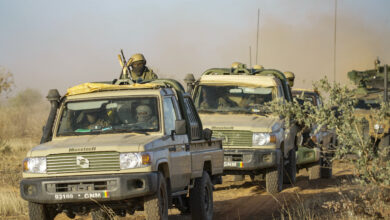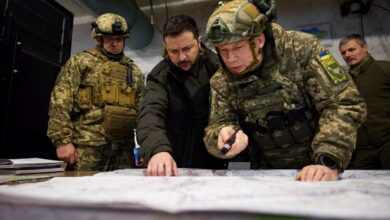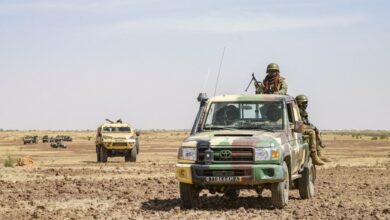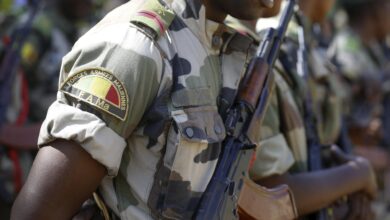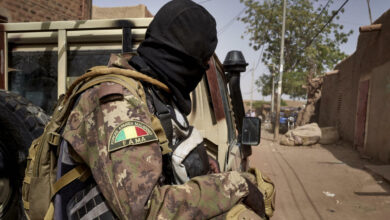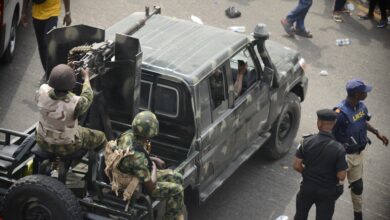The fledgling G5 Sahel Joint Force set up to fight jihadists is more effective – with fewer resources – than the United Nations peacekeeping mission in Mali, Mauritania’s president said.
“The G5 makes do with the little resources it has, despite lots of pledges, while Minusma has huge resources and doesn’t do as well,” Mohamed Ould Abdel Aziz told French journalists on Wednesday, November 21. “Relatively speaking, the G5 has not failed.”
Aziz was speaking two weeks before a donor conference for the G5 Sahel hosted by Mauritania, where the secretariat is based.
The G5 Sahel was launched in 2014 to improve cooperation on development and security between Burkina Faso, Chad, Mali, Mauritania and Niger. The five nations began work in 2015 on the G5 Sahel Joint Force, a counter-terrorism initiative which was spearheaded by France, the colonial power in the region.
A June 2017 U.N. Security Council resolution called for international support, and the force launched a month later with a mandate to combat terrorism, transnational organized crime and human trafficking, but lack of funding and shortfalls in equipment and training have led to delays in its operations.
According to a March 2018 report by NATO Strategic Direction – South, the force aims to maintain seven battalions – two from both Mali and Niger, and one each from Chad, Burkina Faso and Mauritania. Each battalion consists of 550 soldiers plus 100 police or gendarmes, for a total of 4,550.
It has three areas of operation: an Eastern sector covering the border between Niger and Chad with two battalions; a Central sector covering the three borders area between Mali, Burkina Faso and Niger with three battalions; and a Western sector covering the border between Mali and Mauritania with two battalions.
Troops will work alongside the roughly 4,500 French personnel deployed to Operation Barkhane which has a mandate for counter-terrorism operations across the region, as well as the U.N. Minusma stabilization mission in Mali, which has about 12,000 troops and 1,750 police deployed.
Minusma, set up in 2013, ranks as the most dangerous in the world for blue helmets, with 173 fatalities according to U.N. figures. It has an annual budget of around a billion dollars.
“We don’t understand why the international community continues to pour billions of dollars into Minusma without results while the five G5 countries … don’t manage to raise even one-tenth of what goes every year to Minusma,” Aziz said.
The G5 Sahel Joint Force has received €100 million ($114 million) in financial support from the E.U., but much of around €420 million that was pledged at an international donor conference in Brussels on February 23 has not been fulfilled.
“At the moment, [pledges] are materializing very slowly,” France’s Minster for the Armed Forces Florence Parly told reporters on November 4, adding that only “10 to 25 percent of the funds” have been disbursed.
According to AFP, only around half of the pledged funding – $206 million – for the G5’s costs has so far been received.
The force needs another €100 million per year to operate, said Aziz, speaking on the sidelines of a cultural festival in the southeastern oasis town of Oualata.
The new G5 Sahel joint force commander, Mauritanian General Hanena Ould Sidi said on October 2 the force was planning operations that “will take place shortly” with a view to “neutralize terrorists.”
Parly said on October 8 that the force has conducted six operations, and the was to launch three operations in “coming weeks.”
Those operations are now expected to begin in December.
Hanena Ould Sidi replaced the force’s first commanding officer, Malian General Didier Dacko, after a suicide bomb and gun attack destroyed its headquarters in Sevare. The June 29 assault was reportedly claimed by an official from the Support Group for Islam and Muslims (JNIM), which is linked to al-Qaeda.
The European Union said in July that it would finance the construction of a new headquarters in Mali, and Hanena Ould Sidi said in September that G5 Sahel Joint Force headquarters will move to Mali’s capital Bamako.
Calls for direct UN funding for G5 Sahel resisted
The U.S has also pushed back against proposals for the U.N. to directly fund the G5 Sahel force. Despite almost doubling U.S. assistance to the G5 Sahel Joint Force member states to almost $111 million, that support takes the form of “bilateral security cooperation efforts,” rather than direct funding for the joint force, a U.S. Africa Command spokesperson told The Defense Post earlier in November.
Speaking at the U.N. General Assembly on September 26, Mali’s President Ibrahim Boubacar Keita said the G5 Sahel Joint Force was “struggling to become fully operational,” highlighting the lack of an adequate mandate and “especially appropriate funding.”
Keita again urged the Security Council to provide it with “adequate, timely and predictable funding.”
U.N. Secretary-General Antonio Guterres has pledged to pursue support for the force. Guterres, as well as France, has lobbied for regular U.N. funding, in addition to support already agreed by the Security Council in December, when it authorized the Minusma mission in Mali to provide assistance to the joint force.
But on May 23, the U.S. said it opposed a Security Council mandate for the force as well as direct U.N. funding.
US counter-terrorism assistance to G5 Sahel member states almost doubles to $111 million
With reporting from AFP



